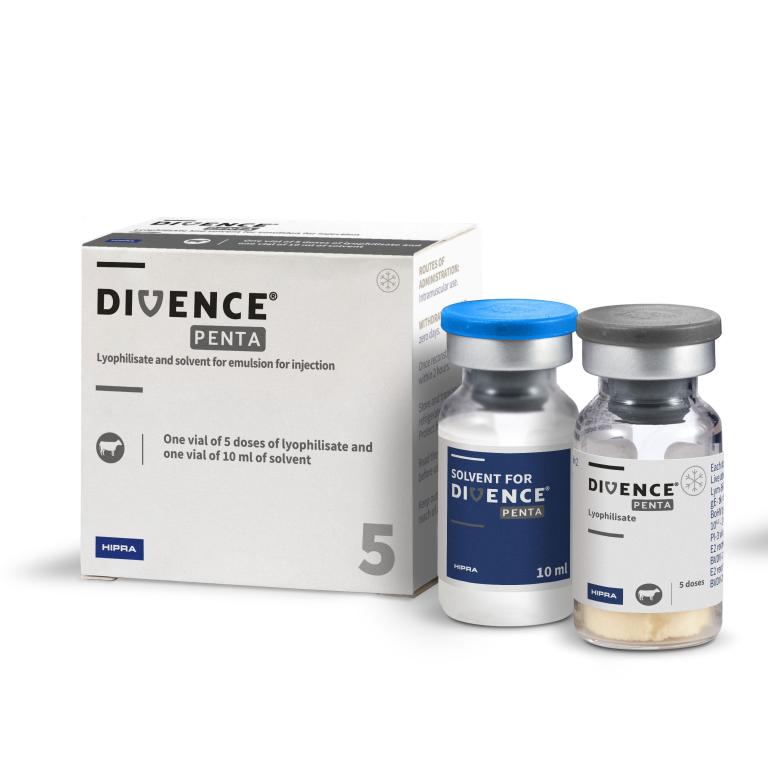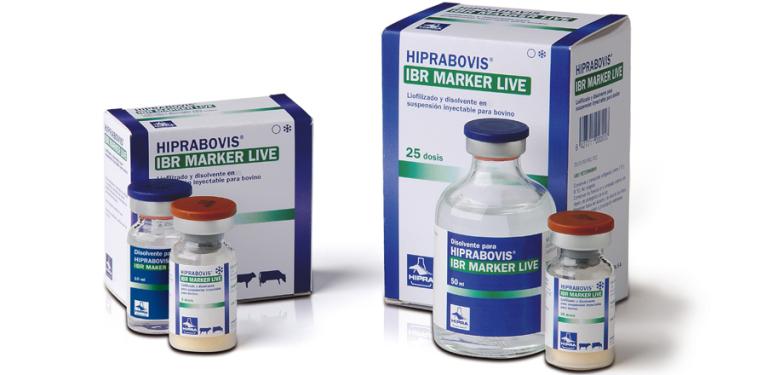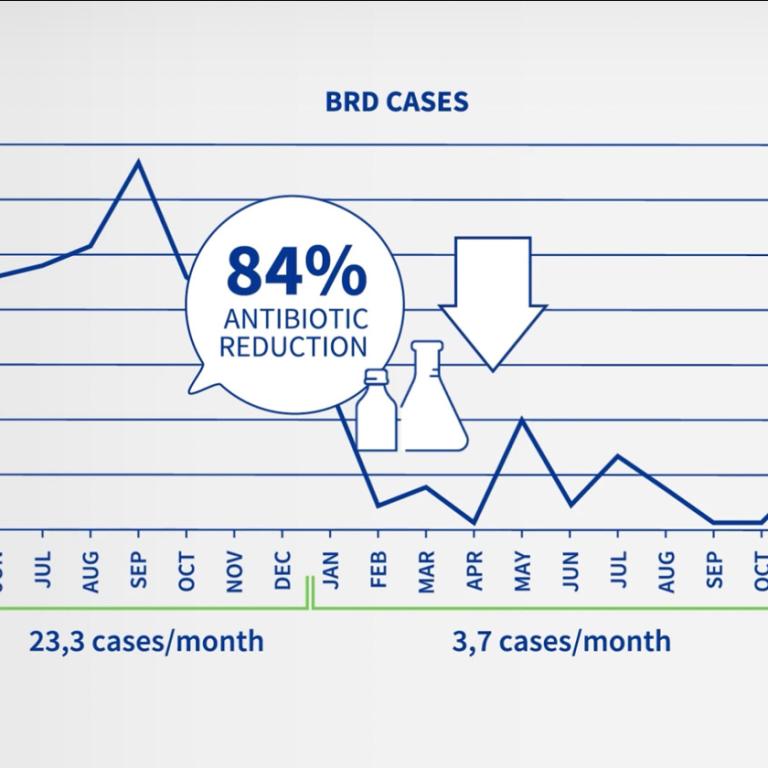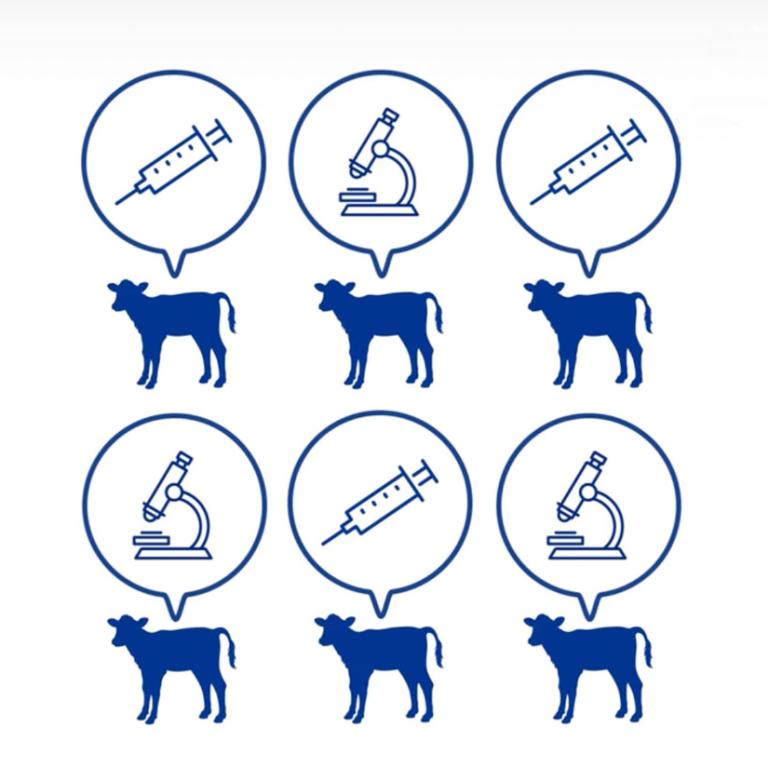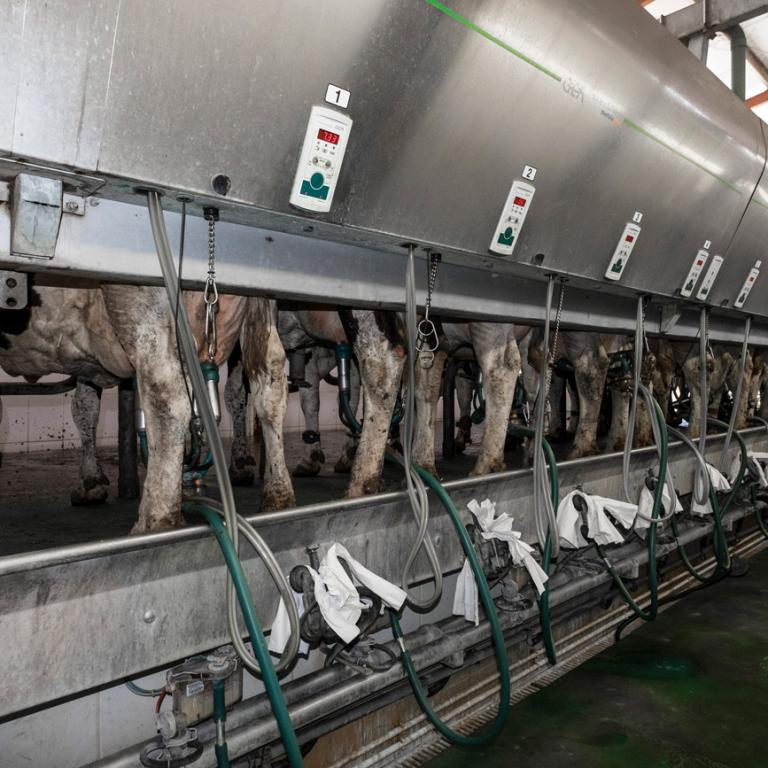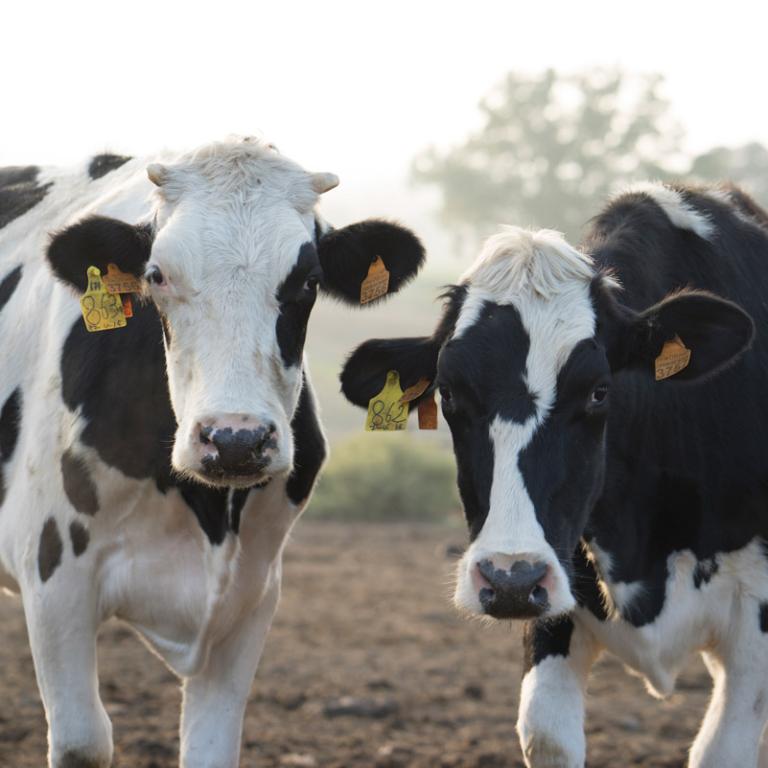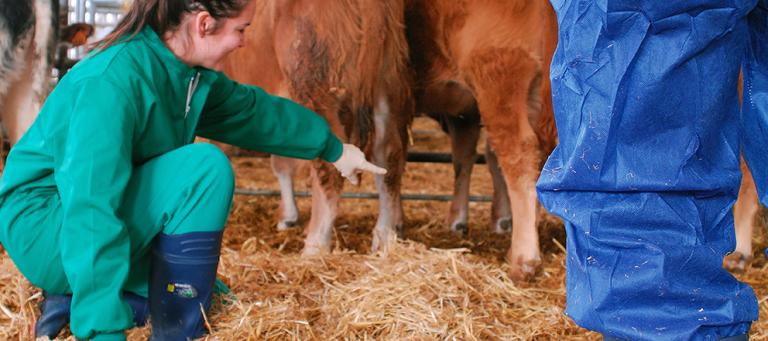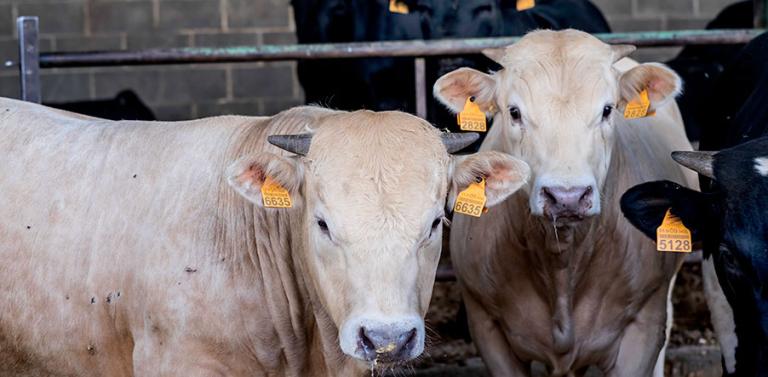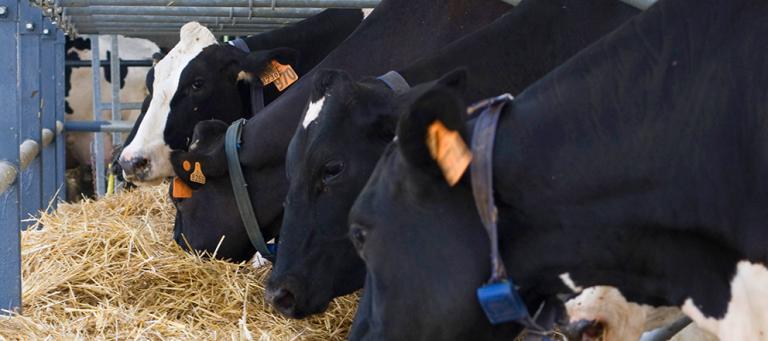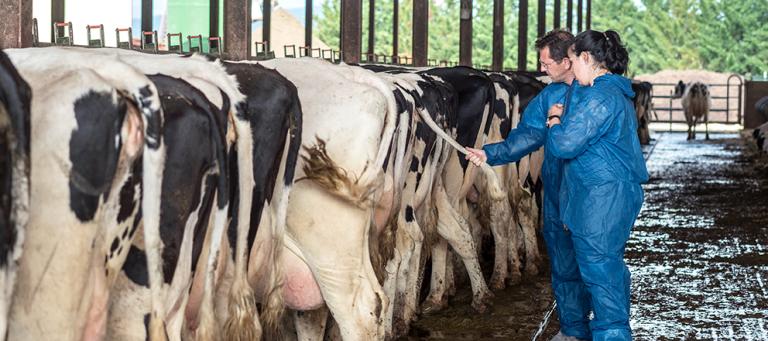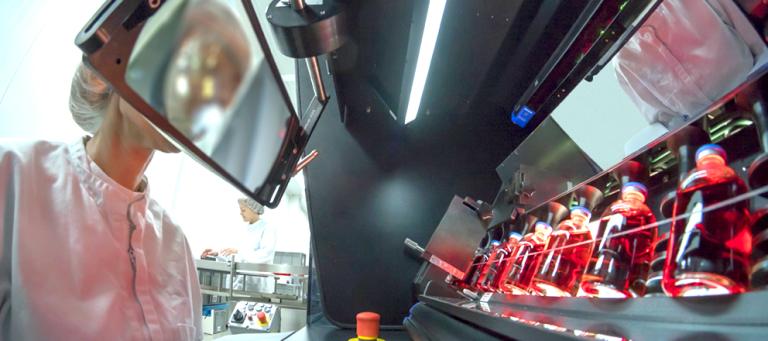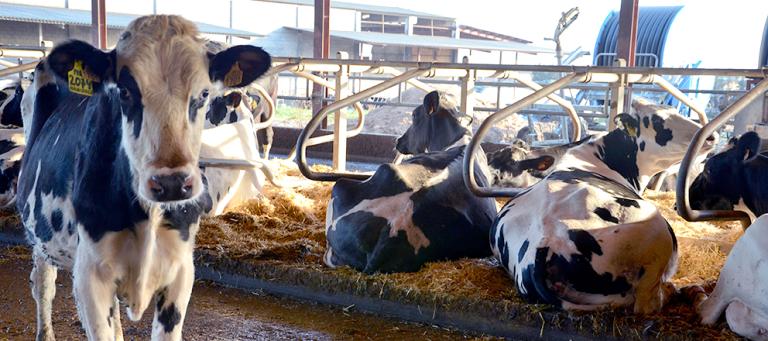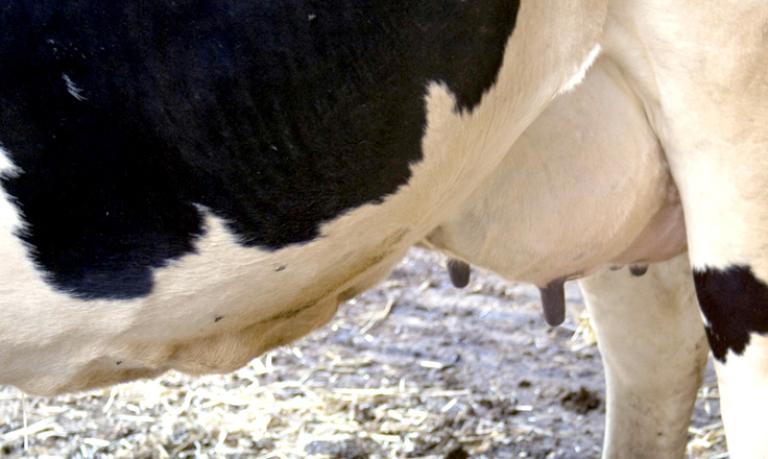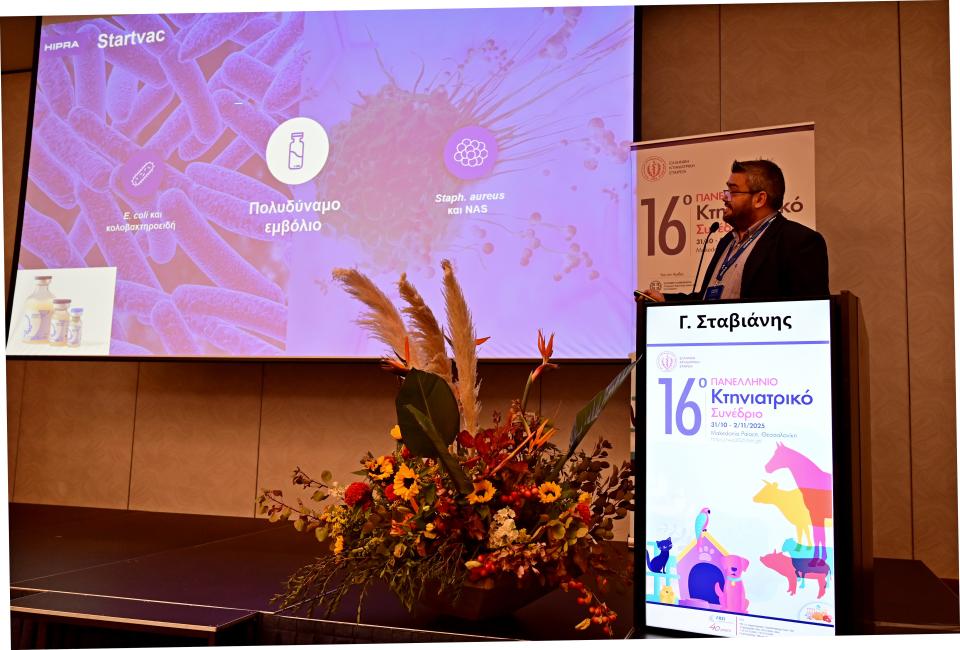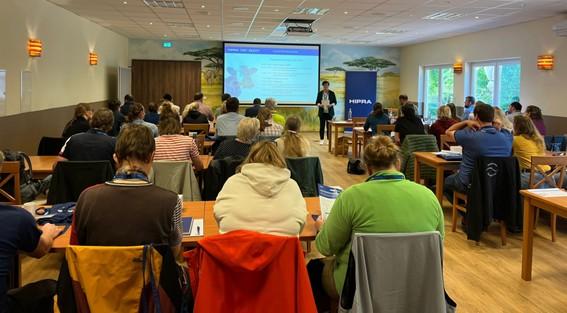Mastitis is the most costly disease of dairy cattle and each year causes economic losses of 35 billion dollars in the global dairy industry, which represents a 7-8% shortfall in dairy revenue.
AETIOLOGY:
Bacteria are normally classified into 3 groups: environmental, contagious and mix infections.
- Contagious organisms are well adapted to survival and growth in the mammary gland and are frequently responsible for chronic infections. Their prevalence increases with days in milk. Examples are Staphylococcus aureus, Streptococcus agalactiae and Mycoplasma spp.
- Environmental organism: They live in the environment, mainly in the bedding, and the infection happens between milkings. They do not have tropism for the alveolar cells so they replicate really quickly to survive. They produce short duration intramammary infections and they have high clinical incidence when animals are immunosuppressed (after calving for example). Examples are Escherichia coli, Streptococcus uberis and other coliforms like Klebsiella spp.
- Pathogens with mixed characteristics like Coagulase Negative Staphylococci (CNS) and Streptococcus dysgalactiae.
TRANSMISSION:
Contagious bacteria: Transmission takes place during milking and biosecurity management helps to avoid the entry of these pathogens. When new animals arrive on the farm, they should be quarantined until the results confirming negativity arrive.
Environmental bacteria: The infection happens between milkings. To control this type of bacteria, the environment must be dry, clean and comfortable.
SIGNS:
Mastitis is an inflammation of the udder which can be defined as either clinical or sub-clinical:
- Clinical mastitis: Detection of clinical mastitis is based on 3 parameters. Depending on how many are affected, we will have a different grade of mastitis. The classification is as follows:
| Mild | Milk secretion altered | GRADE 1 |
| Moderate | Milk secretion and mammary gland altered | GRADE 2 |
| Severe | Secretion, mammary gland and general state of health altered | GRADE 3 |
- Subclinical mastitis: Sub-clinical mastitis is most commonly recognized by detecting the inflammatory process in the udder by testing a sample of milk.
- California Mastitis Test (CMT) sometimes called Rapid Mastitis Test (RMT) which can give results within a few seconds and so is effectively a cow-side test but is semi quantitative giving results as negative or +, ++ or +++.
- Somatic Cell Count (SCC). Somatic cells are leukocytes (95-99%) plus epithelial cells. When an infection occurs, leukocytes arrive at the infected zone in massive numbers. This leads to an increase in SCC in milk.
- Bulk Tank SCC (BTSCC) As a rule of thumb for every 100,000 cells per ml increase in BTSCC there is an 10% increase in the proportion of infected cows within the herd. BTSCC targets will vary from country to country and herd to herd, however a 400,000 cells/ml upper legal limit for milk to be used for human consumption is common in many countries.
- Individual Somatic Cell Count (ISCC): Individual Cow SCC determination is most commonly performed on composite samples (comingled milk from all 4 quarters) and gives results in 1,000s cells/ml. Ideally, this should be done every month. It is an indicator of how the cow is reacting to the infection. We consider as healthy, cows under 200,000 cells/ml. Cows above this threshold without clinical symptoms are considered subclinically infected. In heifers, we normally use 100,000 cells/ml instead of 200,000 cells/ml as threshold. The SCC is mainly altered by intrammamary infections (IMI) but variation can be the result of other factors (age, season, other diseases, etc.).
- California Mastitis Test (CMT) sometimes called Rapid Mastitis Test (RMT) which can give results within a few seconds and so is effectively a cow-side test but is semi quantitative giving results as negative or +, ++ or +++.
- Electrical conductivity: This is integrated in most of the automatic milking systems and measures ions. This method is based on the difference in salt concentration between infected and non-infected quarters.
DIAGNOSIS:
Sampling for microbiological analysis and PCR are the only truly diagnostic methods which allow us to identify the pathogen that is causing disease. The rest of the indirect methods (ex. SCC, CMT, conductivity) detect mastitis but do not give a real diagnosis.
- Culture from bulk tank: Having the bacterial culture/count of each type of germ can help in diagnosis, allowing us to identify where the problem is and what type of measures we need to apply.
- Individual culture: With this type of culture, we can identify the predominant pathogen and establish a protocol (treatment, vaccination, elimination, segregation) based on the results. The individual culture can be very useful in cows with either clinical cases or elevated SCC in order to isolate and identify the most important pathogens.
- PCR: PCR-based methods are now being used increasingly in bovine mastitis diagnostics with good reliability as a complement to bacterial culture. Bacterial screen is limited to a determinate number of pathogens but will detect both live and dead bacteria, it is more sensitive and faster. STARTCHECK is based on real-time PCR and samples are transported using an FTA card (no refrigeration needed). It detects 4 important pathogens: S. aureus, CNS, E. coli, Coliforms. Samples are taken from the bulk tank and from a mastitis pool.
PREVENTION AND CONTROL:
Effective control programs are based on detailed assessment of all available data and implemented with a holistic approach taking into account both the animal’s environment (infection pressure), and the animal itself (ability to resist infection). As recalled by Dr Ynte Schukken at the NMC conference held in Ghent in 2014, in the prevention of mastitis and production of quality milk, one and one make three (1+1=3). Which means; the synergy of adding together good management (1) and an excellent vaccination plan (1) gives the best results (3).
An effective control program should include, among others, the following points:
Environmental control. The goal is to always keep our lactating, dry and transition cows clean, dry and comfortable in order to minimize teat exposure to environmental bacteria and thereby reduce the risk of intramammary infections (IMI).
Evaluation of the milking parlour. Informed estimates of direct and indirect milking machine effects range from about 6% to 20% of the overall new mastitis infection rate. The direct effects (including bacterial transport, cross-contamination and impacts) might account for about 10% of new infections on most farms. Indirect effects (including effects on the health of the teat canal, teat tissues and skin) might account for another 10% in an average herd.
Efficient milking routine: During the milking process, some of the critical factors influencing the risk of new intramammary infections are: cleanliness of udders and teats, cow handling procedures and the functioning of milking equipment. Therefore, the main objectives of an efficient milking routine are to produce high quality milk, to reduce the risk of new intramammary infections and total milking time, to minimize stress to cows and to milkers, as well as to improve dairy farm profitability.
Vaccination: The aim of vaccination is to increase the immunity (immunological memory) of the animal in order to prevent new infections and/ or promote clearance of infection. Vaccination against bovine mastitis has an effect on acquired immunity by increasing the levels of immunoglobulins (total IgG) in blood and milk.


